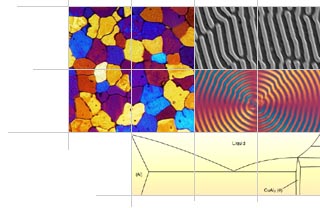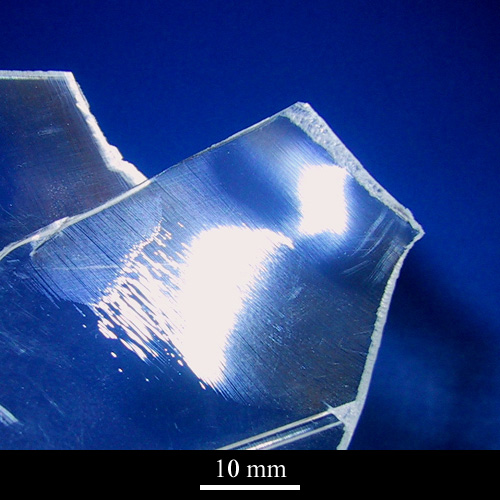Micrograph Library
Browse the libraryAdvanced searchSystemsCompositionsTechniquesKeywordsPhase diagramsHelpPreferencesAbout the micrograph libraryTerms of useContribute micrographs!FeedbackLinksCredits Print this page

Micrograph 560 and full record

- Micrograph no
- 560
- Brief description
- Crazing near a fracture surface in polystyrene
- Keywords
- craze
 , crazing, fracture
, crazing, fracture  , polymer
, polymer  , polystyrene (PS)
, polystyrene (PS) - Categories
- Fracture, Polymer
- System
- Polystyrene (PS)
- Composition
- Not specified
- Standard codes
- Reaction
- Processing
- Applications
- Polystyrene is hard and inexpensive and its use is very widespread. CD cases and clear plastic cups are common examples. Domestic appliance casings are also typically made from PS
- Sample preparation
- Technique
- Photography (no microscope)
- Length bar
- 10 mm
- Further information
- Crazes are both a precursor to cracking and a toughening mechanism in stressed polymers. They only form when a certain critical tensile stress has been attained and form perpendicular to the largest tensile principal stress. They are very fine crack-like projections from the fracture surface but are bridged by even finer material, giving approximately 50% voids. It is these fibrils which interfere with light in an otherwise transparent polymer to make the crazing visible as a whitening of the strained material.
- Contributor
- J A Curran
- Organisation
- Department of Materials Science and Metallurgy, University of Cambridge
- Date
- 03/10/02
- Licence for re-use
 Attribution-NonCommercial-ShareAlike 4.0 International
Attribution-NonCommercial-ShareAlike 4.0 International
View image alone .. in a new window
Help is available on downloading images

